But this year, things were different for the 19-year-old. The entire country, it seemed, was engaged in the campaigns leading up to the tenth presidential elections.
Alongside his studies, Sohrab and his mother, older brothers, and friends would take part in rallies and activities in support of the reformist candidate Mir Hossein Mousavi, whose youth-driven campaign had garnered a considerable support throughout the country.
One day after the elections, to Sohrab’s and many other pro-reform voters’ disappointment, incumbent Mahmoud Ahmadinejad was named the winner of the election with a landslide victory.
It didn’t take too long for furies to burn up among the reformist camp and reformist candidates Mousavi and Mehdi Karroubi alleged wide-scale election fraud. In support of these candidates, many people took to the streets, and so did Sohrab.
On that day, shots were fired to the crowd and according to state-released reports, seven people were killed.
Sohrab’s mother, Parvin Fahimi, who lost her husband to cancer two years ago, started looking everywhere for her son. She went to police offices, prisons, and courts, and eventually was told that Sohrab is kept at the Evin prison.
Concerned that her son would miss the Konkoor exam, Fahimi would go the Evin prison almost daily and ask people coming out of the prison if they had seen her son.
Finally, on July 11, after a 26-day search, she was told that Sohrab is dead.
“We still don’t know exactly how he died,” says Sohrab’s aunt Farah Mohamadi who resides in Germany.
“They [the authorities] say that he got shot on June 15 and was taken to the coroner’s office on June 19. It’s still a question for us where he was in between those days.”
Like Neda Aghasoltan, whose graphic death by a gunshot wound amidst the protests on June 20 has been widely seen around the world, Sohrab has now become an iconic victim of the violence that followed the election protests.
“I think their innocence at the time of death has turned them into legends,” says Mohamadi, who describes Sohrab as a very kind and calm young man.
Official figures from the government have put the death toll of the protests to about 30, but human rights groups claim the number to be considerably higher.
And now with the alleged reports of torture and forced confessions, human rights groups are increasingly concerned about the well-being of detained journalists, reformist political activists, and protestors who have been imprisoned in large numbers after the break out of the protests.
Karroubi has issued a letter to Ayatollah Ali Akbar Hashemi Rafsanjani, chairman of the Assembly of Experts, claiming he has evidence that many of the prisoners, both male and female, have been sexually abused by their interrogators.
Even some of the Conservative figures within the Iranian regime have spoken out about reports of torture and death of the detained protestors, including the Conservative lawmaker Hamid Reza Katouzian and former Revolutionary Guard leader and presidential candidate Mohsen Rezaei, signaling to tensions at the highest levels within the regime.
Opposition groups are also condemning the broadcast confessions of detained reformist figures such as Mohammad Abtahi in court, claiming that these confessions are coerced in an effort to crush the reformist movement.
The Reform Movement
The reform movement in Iran, which has come to be identified with the iconic green campaign color of Mousavi, attracted a great deal of attention from the international community in the days leading to the June 12 elections, and dominated the headlines after the break out of protests following the election.
“The view that the people of the West and the world had of Iran was that they saw Iran and Iranians in Ahmadinejad and denial of Holocaust and other such things. Suddenly, a great cultured civil movement forms in Iran,” Kardavani says.
A great civil movement that was seen once before during the 1997 presidential election—though not to this scale—when reformist cleric Mohammad Khatami was voted into office.
“Despite all the efforts by the rightist movement at that time, just like what is happening to Mr. Mousavi today, the majority of people went and voted for Mr. Khatami. And so the reformist movement inside the regime was formed.”
Dr. Mojtaba Mahdavi, an assistant professor of political science at the University of Alberta and an Iran expert, says the reform movement in Iran needs to be discussed at two levels, one at the state level, which is very much about power struggle within the establishment, and the other at the societal level, people who have a long history of quest for democracy and freedom.
“The fact is the reformist movement is far ahead of the reformist politicians in terms of their demands,” he says, but the young generation, he adds, “don’t like violence, they don’t want to make a revolution, and they do cost benefit analysis.”
If they think Mousavi is going to bring some change for the better and get rid of Ahmadinejad and his policies, then they’d decide to take part in the elections, but this doesn’t mean that they ideologically believe in all the points supported by Mousavi, he says.
“Although we know that there are a great number of people who simply disagree with the whole establishment of the Islamic Republic of Iran and don’t believe in the concept of Velayat-e Faghih (religious jurisprudence), and still remember what happened in the first decade of the Islamic Republic, killing of the people, torture, but I’m talking about the young generation, who were born after the revolution, and some of them don’t have a memory of Ayatollah Khomeini, and they simply want to have their social freedoms.”
At a state level, the reform movement was formed over a period of a few years.
During the early years of post-revolutionary Iran, the scene of politics was more or less a “one-man one-show politics”, thanks to Ayatollah Khomeini’s charisma and religious credentials, he says. But even then, the beginnings of the two major factions within the establishment were conceived: the leftist Majmae Rohaniune Mobarez (Association of Combatant Clerics), who gradually became characterized in believing in a more open interpretation of Sharia Law and the Islamic teachings, and the conservative Jameh Rohaniate Mobarez (Combatant Clergy Society), known for their right-wing interpretation of Islam and absolutist interpretation of Velayat-e Faghih.
In the leftist camp were people who later evolved into prominent figures of pro-reform movement today such as Mohammad Khatami and Mehdi Karroubi; in the conservative camp were Hashemi Rafsanjani, one of the most influential figures of the Islamic Republic, and many conservative and traditional Ayatollahs such as the Guardian Council members.
After the death of Ayatollah Rouhollah Khomeini in 1989, things changed.
“You have the new leader, Ayatollah Khamenei, who clearly lacked the revolutionary charisma and religious creditentials of Ayatollah Khomeini. Thanks to that, you had more open space for greater faction of politics because people can simply challenge the establishment, but again within the establishment,” Mahdavi says.
For the first 8 years under Ayatollah Khamenei’s leadership during which Rafsanjani held the presidency, the right wing group more or less dominated the politics, at the exclusion of the left wing Rouhaniune Mobarez.
During the last years of Rafsanjani’s period, however, the rick within the right wing Rouhaniate Mobarez happened and a new faction called Kargozarane Sazandegi (the Executives of Construction) was formed.
“These people were technocrats who believed in construction and building in the Islamic Republic of Iran, and they were more or less centric, moderate, right-wing people whose political father was Rafsanjani,” explains Mahdavi.
“They contributed to the more social-political opening which came after the Rafsanjani’s period.”
After Rafsanjani’s two-term presidency ended, during the 1997 presidential elections, a coalition of Kargozarane Sazandegi and Rouhaniune Mobarez who now characterized themselves as reformists along with other small reformist parties saw their triumph in Khatami’s election victory at the exclusion of the right wing Rouhaniate Mobarez.
For a number of different reasons, however, Khatami could not deliver what people had hoped for.
“The nature of the state contributed to his failure, because in the Islamic Republic of Iran the lion share of power goes to the non-elected part, and the Vali-e Faghih [Supreme Leader] and Guardian Council and others. The elected part basically has minimum power,” Mahdavi explains.
And so when Khatami’s two consecutive presidency terms ended, many pro-reformists boycotted the 2005 presidential election and the little-known hardliner candidate Ahmadinejad was elected to office.
Mahdavi says Ahmadinejad is the representative of New Conservatism in Iran, a faction that began to rise 1 or 2 years prior to the 2005 election.
“These New Conservatives are represented by people like Mr. Ahmadinejad, people of the Revolutionary Guards, and now we should say that thanks to the recent event, Ayatollah Khamenei clearly associated himself with this faction,” he says, referring to Ayatollah Khamenei’s public remarks that he prefers Ahmadinejad over the other candidates.
Despite all the leftist rhetoric and Hugo Chavez hugging, the New Cons are a right-wing movement, and what distinguishes them from the right-wing Rouhaniate Mobarez is that the New Cons are closely associated with the Revolutionary Guards, and so they have a military background, Mahdavi says.
After the events following the June 12, 2009 presidential elections, there are now two clear camps: on one side stand the New Cons, and on the other side there is a very broad and lose coalition of the reformists, including Rafsanjani, Khatami, Mousavi, Karroubi, and reformist political parties, and even some moderate pragmatist traditional conservatives such as Nategh-Nouri, he says.
‘A Security-military-economic Mafia’
Kardavani says the real power in Iran is in the hands of a security-military-economic mafia that has taken over all economic matters in Iran.
“Ahmadinejad by himself is not important, Ahmadinejad is the representative of a major mafia section,” he says, adding that a great portion of them are represented by the heads of the Revolutionary Guards.
The Revolutionary Guards were established shortly after the 1979 Islamic revolution as a devout force to the clerical establishment meant to operate in parallel with the regular military. The Guards have grown more powerful in the recent years and have a wide network of economic and political power in Iran.
Kardavani says they are the ones that even during Khatami’s presidency, got all the tenders for major road and dam construction, owned banks, and ran custom offices, therefore handling the vast majority of goods imported to the country. Today, under Ahmadinejad’s presidency, they’ve become even more powerful.
“They are handling affairs in Iran at the moment, and all the violence that they do is so that they don’t lose the vast economic interests, because they know if they don’t have the political power, they can’t get these economic benefits.”
As to why Ayatollah Khaemei has decided to side with them, there are two opinions, Kardavani says.
Some say that Ayatollah Khamenei is the man behind all these affairs, and some believe the opposite that in reality, Ayatollah Khamenei himself is also controlled by them; whatever they say, he has to obey.
“Khamenei does not have the base among clerics that Khomeini did. He put aside all the other movements and stood beside this security-military-economic movement, and has tied his destiny to the destiny of the movement that is currently ruling Iran,” he says.
The group also has a strong particular ideological inclination among them, which in Iran is called the Imam Zaman sect, he says.
Kardavani describes them as an extremist sect in Shia Islam who believe are in direct contact with the 12th Imam, Imam Zaman or Mahdi, said to be the savior of humankind by Shia Muslims.
He says they believe they receive their instructions directly from Imam Zaman, and therefore don’t have very good relations with the clerics in Qom, the powerhouse city of Shia Islam in Iran.
In fact, many senior clerics and Grand Ayatollahs have spoken out regarding the recent events and expressed concern about the current state of affairs.
There are many behind the scene figures belonging to this camp, Kardavani says, naming hardliner cleric Ayatollah Mohammad Taghi Mesbah Yazdi, said to be Ahmadinejad’s idol, as one but a small figure among them.
‘A page of the history of Iran has been written’
Kardavani says although the political structure in Iran has not been a totalitarian one in the real sense of the word as was the case in Soviet Union or is in communist China, it seems the Iranian regime has gone towards that route to become a totalitarian establishment.
However, he says, the history of the formation of Iran’s social movements and revolution is such that it would not allow any single force to dominate the scene for ever.
“The fact is that whatever they do to this [reform] movement, a page of the history of Iran has been written. There is no doubt about that,” he says.
“I think that the Iran movement will play its role, and the legitimacy of Mr. Khamenei has been completely ruined, and this regime is not a regime that can continue this way. It’s just a matter of time.”
Timeline: Transition of Power
1979 February – Ayatollah Rouhollah Khomeini returns to Iran from exile. The Islamic revolution overthrows the monarchy system.
1979 April – The Islamic Republic of Iran is formed after a referendum. Khomeini becomes the Supreme Leader of Iran shortly after.
1980 January – Abdolhasan Banisadr is elected as the first President of the Islamic Republic.
1981 August – Banisadr’s Prime Minister Mohammad Ali Rajai becomes the second President following Banisadr’s flee to Paris after falling out of favor with Khomeini.
1981 October – Ali Khamenei is elected as the president, becoming the first cleric to serve in the office. Mir Hossein Mousavi becomes Prime Minister after the parliament does not give vote of confidence to Khamenei’s first choice, Ali Akbar Velayati. Khamenei serves two consecutive terms after being re-elected in 1985.
1989 June – Ayatollah Khomeini dies. President Khamenei is appointed as the new Supreme Leader.
1989 August – Akbar Hashemi Rafsanjani is elected as president. He serves two consecutive terms in office after his reelection in 1993.
1997 August – Reformist cleric Mohammad Khatami is elected to office with a landslide victory. He is reelected in 2001, serving two consecutive terms.
2005 August – Hardliner conservative Mahmoud Ahmadinejad is elected to office as the 6th President.
2009 June – Incumbent Ahmadinejad is announced as the winner of the 10th presidential elections.
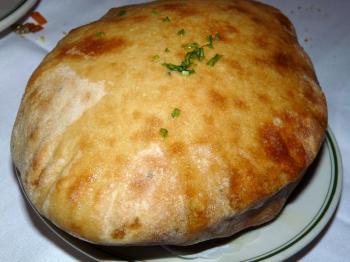
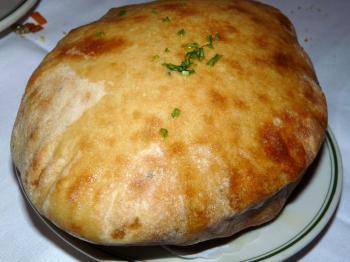
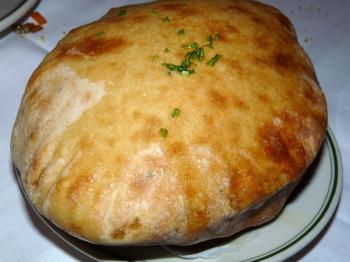


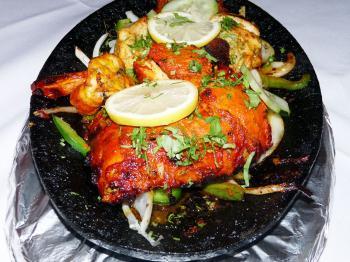
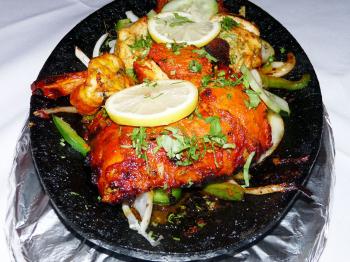
Friends Read Free